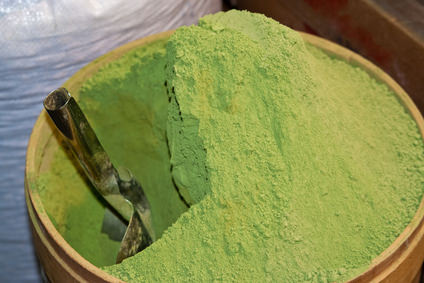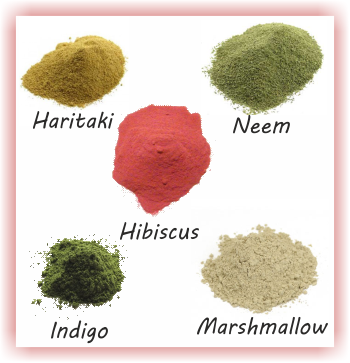
In Part one we were introduced to the world of Ayurveda and how we could add some basic powders and oils into our regimens. But what if you want to switch your entire regimen completely to one that is ayurvedic? It can get complicated but it is not impossible.
Where To Start
The first place to start is by identifying your hair’s needs and then work on gathering the ingredients to meet those needs. For instance to build a great regimen you will need something to clarify or cleanse the hair, condition and moisturize, and finally something to seal.
Make a product list and get familiar with what each herb does and how it will benefit your hair regimen as you build it.
Cleansing
Shampoo bars make things super easy for us because instead of mixing powders together that are geared towards cleaning the hair, you could just pick up your favorite bar and get cleansing.
Shampoo bars are sulfate free and are so moisturizing that you can almost forget that they are used to remove dirt and residue from your hair. Choose your bars wisely, the less suds the better and the ones infused with oils and nuts are of much better quality than those loaded with surfactants.
Chagrin Valley Ayurvedic Shampoo Bar* has great reviews and it is loaded with wonderful ingredients such as hibiscus* for conditioning and growth, Aritha which is a natural cleanser, coconut milk which adds moisture and strength and Bringraj that treats for premature graying.
Once you have chosen your cleansing agent, decide on how often you want to shampoo. The great thing about switching completely to ayurvedic is that you can shampoo your hair more often than if you would using a regular sulfate laden shampoo. The point is, you have options, every couple of days or every week or every other week as necessary.
If you decide that a shampoo bar* is not for you then you can create a cleansing mix to clean your hair. Again identify the ingredients that you want to use for your mix and in each case you want to create a paste like mixture that can be applied to your hair like a relaxer or a mask. You need to allow the mask to sit on your hair for at least 20 minutes and then wash clean with some cool water.
Many women who follow an ayurvedic regimen also actively use an ACV rinse to remove any additional oils or residue, so make sure apple cider vinegar* is on tap as part of your cleansing routine.
Shampoo Mix Sample
2 tablespoons Amla
2 tablespoons Shikakai
1 tablespoon Hibiscus
Shampoo Mix Sample
2 tablespoons Neem
2 tablespoons Shikakai*
1 tablespoon Hibiscus
The easiest way to come up with your own unique mix is to pick something that is geared towards cleansing, something geared towards conditioning and strength and another ingredient that treats something specific, like hair loss or dryness.
Have fun with it and make note on how your hair feels after trying something new so that you can repeat or not repeat the process.

Conditioning
Just like in the case of shampoo, you want to pick ingredients that are geared towards conditioning the hair, adding moisture and strength. Examples of powders geared towards conditioning are hibiscus petal powder which conditions hair and prevents hair loss.
Marshmellow Root Powder also conditions the hair, nourishing the hair follicles, adding shine and vibrance. Aloe vera gel which we all know and love is known for its pH balancing properties and is a light conditioner, great for adding to our natural butters and oils to create sealants and moisture agents. Kalpi Tone which we mentioned in part one, Orange Peel, nettle and Fenugreek are all amazing and have great conditioning properties.
For you conditioners pick your products and mix your ingredients with just enough water to create a paste then apply to your hair. Allow the mix to sit for at least 45 minutes to an hour, kick your legs up and let those powders do their work.
Another great tip is when you are deciding on measurements, add more of the powder that has more conditioning properties and less of the powder that does all your other bonus stuff.
Conditioner Mix Sample
4 tablespoons of Hibiscus* Petal Powder
4 tablespoons of Marshmellow Root Powder
3 tablespoons of Amla Powder
Just as a side note some of us prefer intense slip from creamy type conditioners so you can opt to cheat on your natural regimen by adding a little cheap conditioner to your mix to create that consistency you are used to.
If you are the ultimate mixtress then one of the best parts about ayurveda, other than the wonderful benefits it provides to your hair, is experimenting with various recipes to add as special bonuses to your regimen.
Here are a few sample recipes to get you on your way.
Scalp Treatment
Amla Powder
Tulsi leaves– Anti-fungal agent for dandruff
Ayurvedic Oil Rinse (Oil Options)
Herbal Hair Cream
Adjust ingredients according to your needs
Ayurvedic Hair Rinse
1 ½ cups Distilled Water
2 tablespoons Haritaki Powder
2 tablespoons Hibiscus Petal Powder
½ cup Rosemary Hydrosol
½ cup Organic Apple Cider Vinegar
There are a few women who have completely embraced not just ayurvedic but organic hair care as well. Naturally Nike is a good example of a lady who has done just that and she says that her regimen is now 90% organic with many ayurvedic elements too.
Do you think you would ever switch to a completely ayurvedic regimen?

Great info. The only one in this group of powders I have heard of and used is Neem. I will now look into these other powders on my next trip to the Indian market.
since last two months I have a complete aayurvedic hair care regimen and I simply love it.. it is worth doing ladies 🙂
Can I use ayuverdic herbs after after a prepoo (with oil) ?
If I’m transitioning, can I use herbal shampoo on my hair? I’ve read the artical about the three herbal shampoo recipes and I bought the powders.